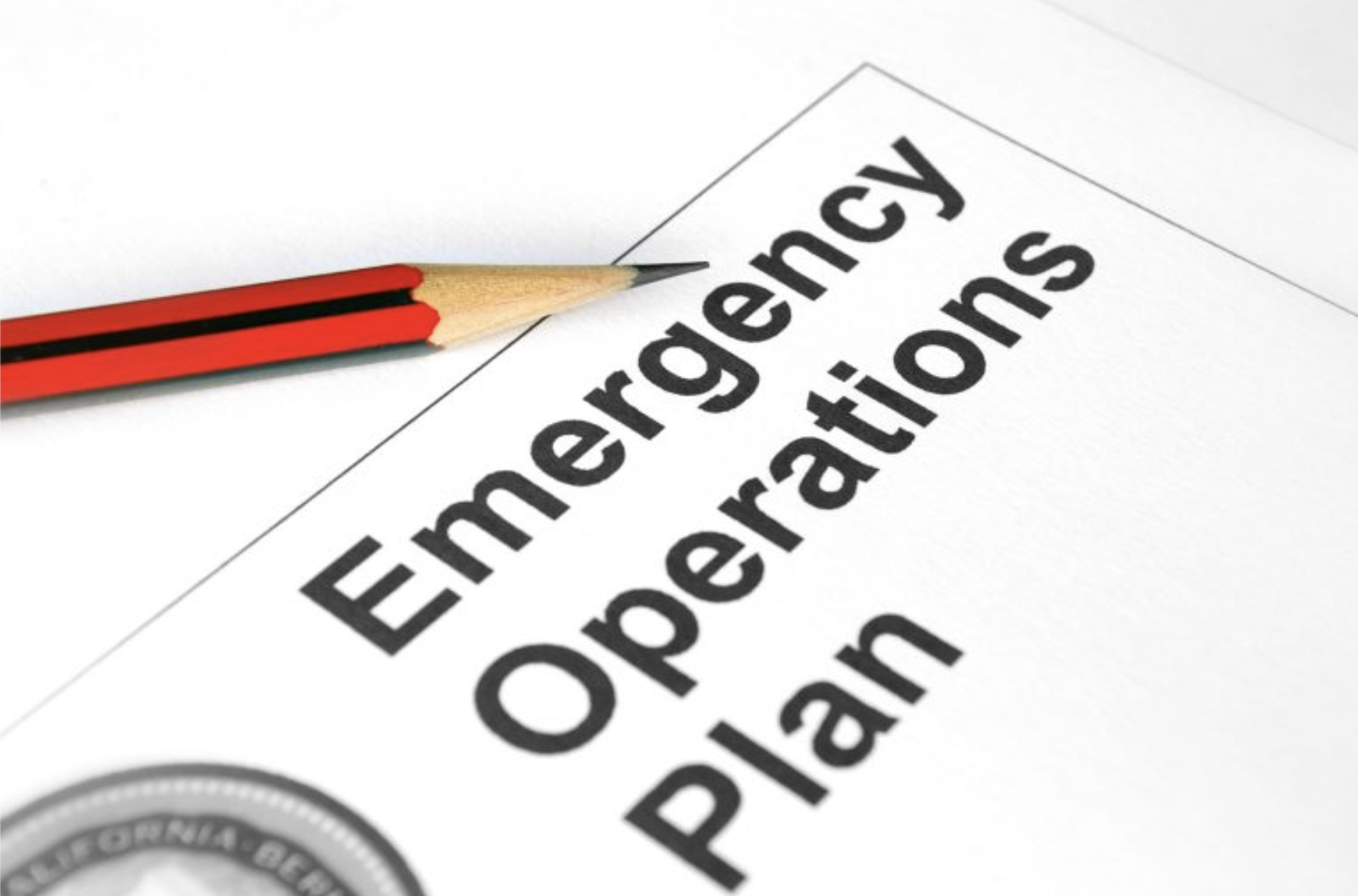Emergency Operations Plan
Why Perform an Emergency Management Assessment?
In short, Emergency Management (EM) involves four main phases:
Mitigation: A sustained action to reduce or eliminate risk to people and property from hazards and their effects. Mitigation focuses on “Tools” used to reduce risk. Tools include Hazard Identification and Mapping, Design and Construction Applications, Land Use Planning, Financial Incentives, Insurance and Structural Controls.
Preparedness: A state of readiness to respond to a disaster, crisis or any other type of emergency situation. Preparedness involves a building block approach through the efforts of planning, training and exercising. Preparedness is everyone’s responsibility, both the public and private sectors.
Response: The act of responding to an emergency or large scale disaster. This includes actions associated with life safety, incident stabilization, and property preservation. Response actions take place during an exercise or emergency. Response involves putting preparedness initiatives into action.
Recovery: Includes actions taken after an emergency or large scale disaster to return to normal business operations. Recovery includes applying for financial assistance to pay for losses and or repairs. Assistance can be applied through FEMA and your organization’s insurance carrier(s).
The four main phases of Emergency Management involves ongoing planning and assessment. It is a constant evolving cycle that presents organizational demands and complexities in respect to strategizing effective and efficient disaster preparedness efforts and compliance with regulatory agencies.
Numerous publications including the Federal Emergency Management Agency (FEMA), the National Fire Protection Agency (NFPA), the Occupational Safety and Health Administration (OSHA), the Center for Disease Control (CDC), The Joint Commission (TJC), The American Red Cross (ARC), as well as many others, provide guidance and standards for both public and private emergency and disaster preparedness throughout the US.
Organizations must plan and assess risks that will impact their community as a whole. The engagement of both internal and external stakeholders throughout the emergency management planning process is paramount and involves strategic planning.
To that end, hospitals, universities, schools, business and government entities often rely on additional support from subject matter experts to assist with this process. Learn more about our approach, our focus, and our team.
-

A comprehensive and detailed Emergency Management assessment involves a myriad of components including:

Review and incorporation of industry best practices, standards and lessons learned from prior disasters.

An Emergency Management Program that serves as the over-arching strategy within the organization.

The development and assessment of an Emergency Operations Plan (EOP) that serves as a vital document intended to provide flexible and adaptable guidance for the prevention, protection, response, recovery and mitigation to disasters.

The identification of appropriate training for emergency responders pursuant to The National Incident Management System (NIMS) and the Incident Command System (ICS) are required. Additional training related to specific job functions are also required.

Provision of training, mock surveys, and analysis of said.

The identification and assessment of an Emergency Operations Center (EOC)

